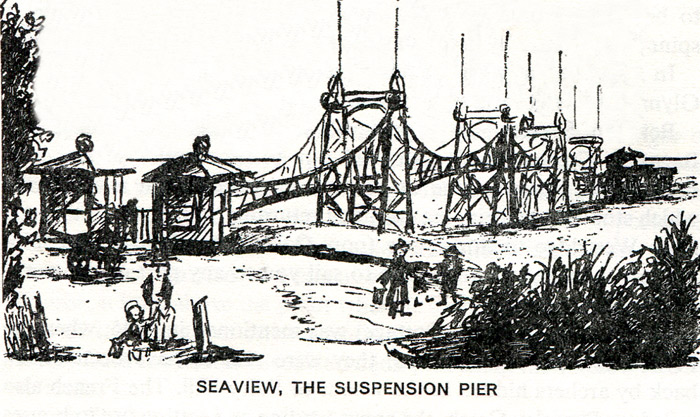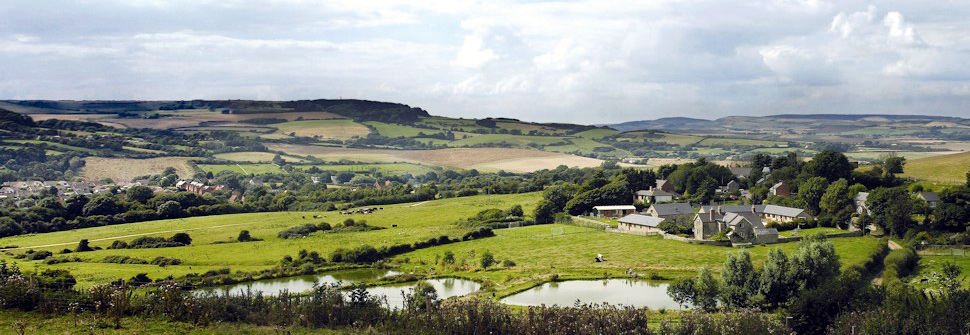Seaview

Seaview dates mainly from the early 19th century, so its history does not go back very far into the past, but there were a number of early dwellings.
The Salterns cottages date from 1640, and were bought in 1790 by Mr. Kirkpatrick, a banker. He erected the necessary buildings and machinery for the manufacture of salt from seawater. At that time, because of the duty levied on it, salt cost one guinea per bushel.
The salt extracted here was used for salting pigs. In the winter men were employed in building the embankment of the Duver, and in looking after the sluices. John Matthews came from Newtown to manage the business, and carried on until the industry was abandoned, when the buildings reverted to being dwelling-houses, which they are today.
In 1806 the Rev. Henry Oglander, who lived at Fairy Hill, sold the land called Outer Cliff or Fort Ground to the Caws family. This now forms the part of Seaview bounded by the High Street, Esplanade, Rope Walk and West Street. The land was divided into nine plots which ran parallel to West Street. The Caws family were allowed "to fasten on the shore their boats and any wood or stone they were using". They had to keep the highway in repair, and twenty years later they built the sea-wall. They also had to allow nine feet of land to be used as a Rope Walk, where new rope was stretched by a spinning-machine before it was used. Rope Walk can still be visited.
In 1842 the Fairy Hill estate came into the possession of William Glynn, who let it for a term of years in order to enlarge Seaview.
Between Seaview and Springvale there was a harbour called Barnsley Creek, which extended up to Pondwell House, now demolished. Vessels came up the creek to trade with a water-mill which stood there, bringing corn and returning with flour. In the lane from Westridge to Springvale (now Oakhill Road) lived the ship- masters, who would undertake to sail you to any part of the world you desired.
Old Fort (now Beach Cottage) was mentioned in 1545, when the French invaded these waters; they were said to have been driven back by archers hidden in the woods of Fairy Hill. The French also sailed up Barnsley Creek, the crews landing and setting fire to houses at Nettlestone.
Elizabeth Fry, the Quakeress, started a library in Seaview in 1840; it failed through lack of funds to replenish the stock of books. Next door to the old Methodist Chapel on the sea-front, now Warren's boat building shed, was the old Crown Hotel from which Crown Slip takes its name.
The unique suspension pier was built by Francis Caws in 1880. It was 900 feet long, and parts of the old Hungerford Bridge were used in the construction. The pier was used by Trinity House pilots, mainly serving the East India Company's ships; and ferries from Southsea called there regularly in the summer months, but not in the winter. Originally, passengers were carried down the pier by pony- trap. It was a sad loss when the pier was totally destroyed by a great storm in 1951.

